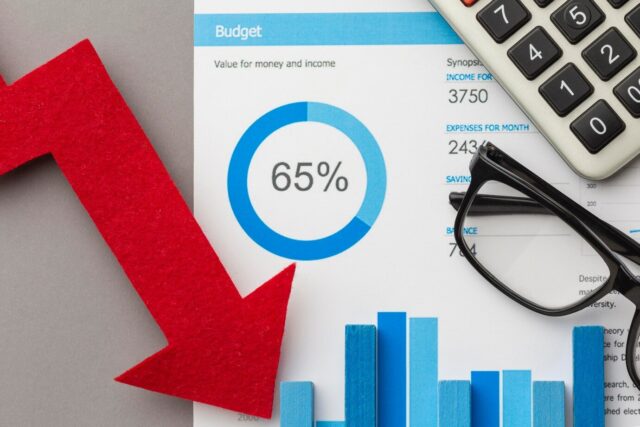
Interest rates play a significant role when it comes to buying a home. They determine the cost of your mortgage and how much house you can afford. With rates constantly fluctuating though, it is very important to understand how these impact home-buying decisions.
How Interest Rates Impact Your Mortgage Payments

According to the experts over at Denver-based Mortgage Maestro, when you work with a Colorado mortgage lender – or indeed a lender from any other state – to secure financing for a home, you agree to repay the loan amount plus interest over, say, 15 or 30 years. The interest rate determines your monthly principal and interest payments. Know that even small rate changes can equate to hundreds of dollars per month and tens of thousands over the life of the loan.
For example, on a $300,000 loan at 4% over 30 years, your monthly payment is $1,432. At 5%, it rises to $1,610 – a $178 increase. Over 30 years, this is $64,000 more in interest costs. Clearly, then, rates significantly impact affordability. When they rise, you may qualify to borrow less money. But if they fall and your qualifying loan amount and payments stay the same, more of your payment goes toward principal instead of interest.
The Breakeven Point on Rate Increases
Because of the costs associated with buying and selling homes, there’s often a “breakeven point” on rate increases before it makes sense to wait it out. This point is typically between 0.75 and 1 percentage point. Anything below that and you’ll probably lose money trying to time the market and wait for rates to fall again.
For example, say you can afford $2,500 per month at a 5% rate today on the house you want to buy. But rates rise to 6% next month, bringing your payment to $2,700 on the same loan amount – a $200 increase. Nonetheless, exiting the deal could cost you the inspection fee, appraisal fee, rate lock fee, and more. If rates only stay at 6% for a few months before falling back down below 5.75%, you wasted time and money.
The breakeven point evaluates whether rate savings in the future offset the transaction costs of delaying. Run the numbers with your mortgage officer before walking away when rates tick upward.
Managing Falling Interest Rates

Sometimes rates decrease after you’ve already committed to a mortgage. If you locked your rate when signing a purchase agreement, you can’t undo your locking agreement to get a lower rate later. However, some lenders let you float down to a better rate up until 30-45 days before closing. Ask your mortgage lender about their float-down policy.
Another option is refinancing later. You’ll have closing costs again, usually 2-5% of your loan amount. Determine if lower monthly payments make up for those expenses within a few years after refinancing.
Finally, make extra principal payments if rates fall after you obtain your mortgage. This saves massive interest costs over the loan term without refinancing. Just ensure your loan doesn’t charge prepayment penalties.
Consideration of Credit Score
Maintaining a good credit score is essential when seeking a mortgage. A high credit score not only boosts your chances of loan approval but also secures better interest rates. Lenders view borrowers with high credit scores as low-risk, often rewarding them with more favorable terms.
This can mean lower monthly payments and significant savings over the life of the loan. Additionally, a higher credit score opens up opportunities for more attractive mortgage offers.
Borrowers with excellent credit might access loans with more flexible terms or lower down payment requirements. It’s crucial to regularly check and improve your credit score, ensuring you present the best possible financial picture to lenders.
Economic Factors

Interest rates on mortgages don’t exist in a vacuum; they are significantly influenced by broader economic factors. Inflation, economic growth, and government monetary policies play a pivotal role in shaping the interest rate landscape.
For example, in times of high inflation, interest rates typically rise. Conversely, in an economic downturn, rates might drop as part of a government strategy to stimulate spending.
Staying informed about these economic trends is vital for potential homeowners. Understanding the current economic climate helps in predicting interest rate movements, allowing for more informed decisions about when to lock in a mortgage rate.
Professional Advice
Navigating the mortgage market can be complex and daunting. Seeking advice from a financial advisor or mortgage specialist is highly recommended. These professionals can provide personalized guidance based on your financial situation and goals.
They can help decipher the nuances of different mortgage products and how they align with your financial plans. Additionally, mortgage specialists are often aware of the latest market trends, lender criteria, and regulatory changes, which can significantly impact your mortgage options.
This expert insight can be invaluable in making informed decisions and avoiding costly mistakes.
Long-Term Financial Planning

When considering a mortgage, it’s crucial to think beyond the immediate goal of homeownership. Align your home purchase with long-term financial objectives. Interest rates greatly affect the overall cost of a home and your financial stability.
For instance, a seemingly affordable mortgage at a variable rate might become a burden if interest rates rise significantly. Evaluating how different mortgage options and interest rates align with your long-term financial goals, such as retirement planning or education funds, is essential.
This holistic approach ensures that your home purchase supports your broader financial health and future security.
Alternative Mortgage Options
Exploring different mortgage types is crucial in finding the best fit for your financial situation. Adjustable-rate mortgages (ARMs) and fixed-rate mortgages each have unique features that cater to different borrower needs.
ARMs typically offer lower initial interest rates, which can be beneficial if you plan to sell or refinance before rates adjust. However, they carry the risk of future rate increases. Fixed-rate mortgages, on the other hand, provide the security of a constant interest rate over the life of the loan, making financial planning more predictable.
Consider how these options align with your financial circumstances and how they might be affected by future interest rate changes. Each type has its advantages and risks, and understanding these can help you choose a mortgage that aligns with your financial goals and risk tolerance.
Conclusion
Amid rising or falling rates, focus on the total costs over the life of your home loan – not just the monthly payment. Work with reputable mortgage lenders when shopping for the best rate and analyze the long term savings, and not just upfront costs.
Time your rate lock wisely and compare multiple loan offers side-by-side. While interest rates remain outside of your control, take advantage of discounts when they are available.
Apply the strategies discussed here to land the most favorable financing terms, regardless of market conditions. That way, you can comfortably afford your dream home.









